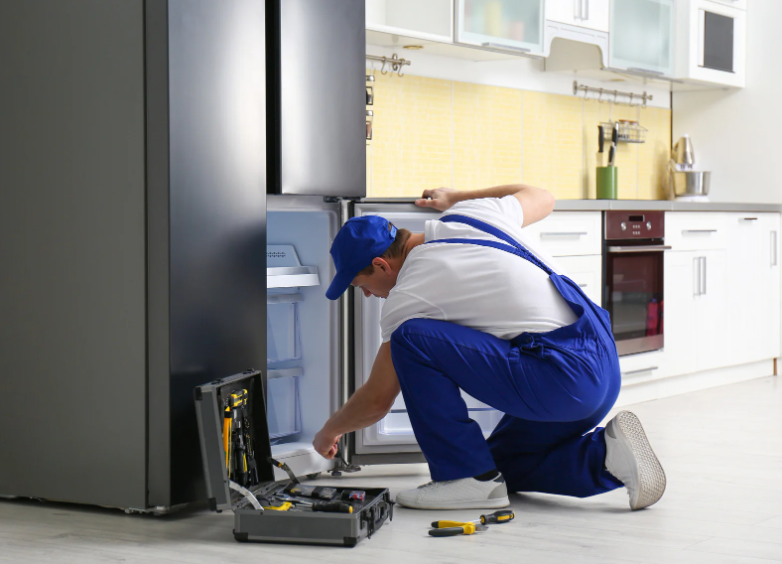Dealing with a laundry machine that won’t spin can be frustrating, especially when it disrupts your regular washing routine. When the spin cycle fails, it often leaves clothes soaking wet and requires extra drying time. In many cases, there are straightforward fixes for spin-related problems, which can help you avoid a costly laundry machine repair. This article will help you troubleshoot the common reasons your laundry machine won’t spin and provide easy steps to fix it.
Common Reasons Your Laundry Machine Won’t Spin
Understanding the Spinning Mechanism The spin cycle is essential in any washing machine, as it removes excess water from clothes, reducing drying time. A well-functioning spin cycle is powered by a motor and controlled by various components, such as belts, switches, and pumps. If any of these parts experience issues, it can cause the machine to stop spinning, making a laundry machine repair necessary.
- Unbalanced Load One of the most common causes for a laundry machine not to spin is an unbalanced load. When items like towels or blankets are washed together, they can clump on one side of the drum, preventing it from spinning effectively. To resolve this issue, stop the machine, redistribute the items more evenly, and start the spin cycle again. This small adjustment can often prevent the need for more involved laundry machine repair.
- Blocked or Damaged Drain Pump A blocked drain pump can also cause spin issues. If water can’t drain from the drum, the spin cycle won’t start. The drain pump may become clogged by small objects or lint, which stops the machine from completing its cycle. Cleaning the drain pump can often resolve the issue and prevent a more complex laundry machine repair.
- Faulty Lid Switch Most top-loading washing machines rely on a lid switch to prevent spinning when the lid is open. A faulty lid switch could stop the machine from spinning, even when the lid is closed. Testing and replacing a faulty lid switch can restore functionality and is often a quick, cost-effective laundry machine repair solution.
- Worn-Out Drive Belt The drive belt connects the motor to the drum, making spinning possible. Over time, this belt can wear out or loosen, which prevents effective spinning. If the belt is visibly worn or has come loose, it may need replacing to restore the machine’s function. This common laundry machine repair can be managed at home with basic tools.
Guide on How to Fix a Non-Spinning Laundry Machine
Turn Off the Machine and Inspect Before starting any repairs, always turn off the machine and unplug it for safety. Gather basic tools for inspection and ensure you have a clear workspace. A thorough inspection can reveal underlying issues that may require laundry machine repair.- Address an Unbalanced Load To resolve an unbalanced load, stop the cycle, open the machine, and redistribute the clothes evenly. Be sure not to overload the machine, as this can lead to repeat spin issues and even require laundry machine repair down the line. Reload the machine with a balanced weight distribution to keep your machine spinning effectively.
- Clean the Drain Pump Locate the drain pump (often found near the bottom front of the machine), remove any debris or clogs, and check for blockages. Cleaning the drain pump regularly can prevent long-term issues, helping you avoid future laundry machine repair needs.
- Test the Lid Switch and Replace if Necessary Testing the lid switch with a multimeter can confirm if it’s faulty. If the switch doesn’t register properly, it’s a good idea to replace it. This is a straightforward laundry machine repair and typically resolves the problem in top-loading machines.
- Replace a Faulty Drive Belt Replacing a drive belt involves accessing the back panel, removing the old belt, and installing a new one. Proper belt tension is key to ensure smooth spinning. This type of laundry machine repair may take some time, but it’s an effective fix for a machine that’s struggling to spin.
Preventing Future Spin Issues
Load Machine Correctly To avoid spin issues, always load your laundry machine correctly by balancing weight across the drum. Uneven loads can strain components, increasing the likelihood of needing a laundry machine repair. Follow the manufacturer’s guidelines on load sizes and avoid overloading to prevent wear and tear on the spinning mechanism.
Routine Maintenance Checks Conducting routine checks can help you catch small problems before they become significant. Check belts, switches, and the drain pump periodically for wear. Regular maintenance can reduce the likelihood of needing laundry machine repair, extending the life of your appliance.
Monitor for Wear and Tear Over time, certain parts will show wear. Watch for changes in noise levels, drum movement, or spin performance. If you notice unusual signs, acting early can prevent a larger laundry machine repair in the future.
When to Call a Professional
Signs That a Professional Repair May Be Necessary If basic troubleshooting doesn’t fix the spin issue, or if you notice electrical problems or motor malfunctions, it may be time to call a professional. Complex issues like these require expert handling and can prevent the need for costlier laundry machine repair.
Cost vs. Benefit of Repairing or Replacing the Machine If the machine is older or repairs become frequent, consider whether it’s more economical to repair or replace the appliance. Large repair expenses may not be justified for an older model, making it wise to evaluate the long-term cost of continued laundry machine repair versus replacement.
Takeaway
Troubleshooting a laundry machine that won’t spin doesn’t have to be complicated. Often, basic steps like balancing loads, cleaning the drain pump, or replacing a faulty switch can resolve the issue. Remember, regular maintenance can go a long way in preventing spin issues and reducing the need for laundry machine repair. By following these steps, you’ll be better prepared to keep your laundry machine in top condition, ensuring it spins properly and works efficiently for years to come.










